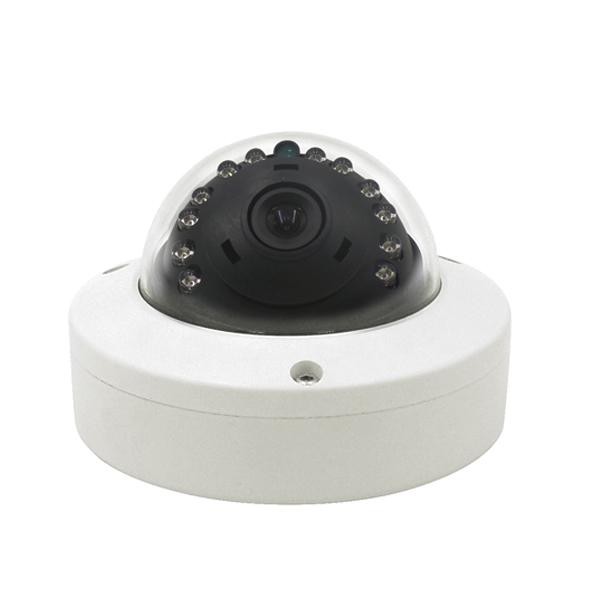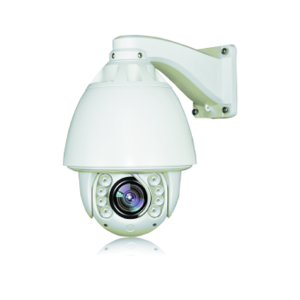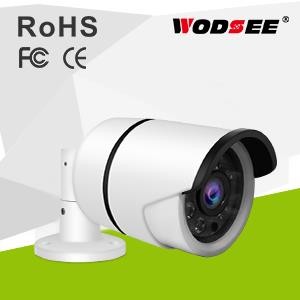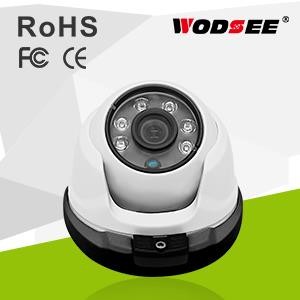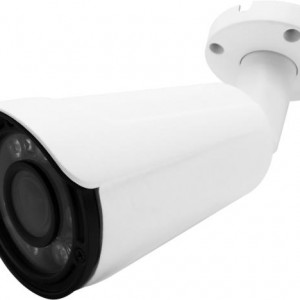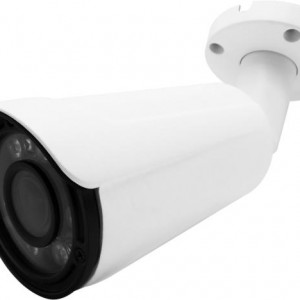WIP130-CB12 Dome POE Video Surveillance Security Home Monitoring Camera
Product Details
WIP130-CB12 Dome POE video surveillance security home monitoring camera
Network camera Features :
1/3″ Hi3518EV200+AR0130C CMOS sensor 1.3mp 960P@25fps
Package: 60pcs/carton (carton size: 59cm×38.5cm×40cm)
With Built in POE
Lens: 3.6mm fixed lens
Compatible with Hikvision Private Protocol
Smart Low Illumination; Smart ROI(4 ROI region)
Free P2P; ONVIF2.4; BLC; 3D-DNR; DEFOG; DWDR
Support auto IR-CUT filter removal function/ICR
Support: Milestone, NUUO, AXXON, igifort,avigilon
Scenarios:
Apply to roads, warehouses, underground parking and other place which required definition picture quality.
Specification:
| Model | WIP130-CB12 | WIP20A-CB12 | WIP20B-CB12 | WIP20C-CB12 | WIP400-CB12 | WIP20S-CB12 | |
| Image Sensor | Hi3518EV200 | Hi3518EV200 | Hi3518EV200 | Hi3516CV300 | Hi3516D | Hi3516CV300 | |
| Main processor | AR0130C | SC2135 | IMX323 | SONY323 | OV4689 | SONY290 | |
| Resolution | 1.3mp | 2.0mp | 2.0mp | 2.0mp | 4.0mp | 2.0mp | |
| Day/Night | ICR | ||||||
| Min.Illumination | Low LUX: 1.0LUX(Color) 0.1LUX (B&W) | Low LUX: 1.0LUX(Color) /0.1LUX (B&W) | Low LUX: 0.1LUX(Color) /0.01LUX (B&W) | Low LUX: 0.1LUX(Color) /0.01LUX (B&W) | Low LUX: 0.6LUX(Color) /0.08LUX (B&W) | Low LUX: 0.1LUX(Color) /0.01LUX (B&W) | |
| Lens | 3.6MM | 3.6MM | 3.6MM | 3.6MM | 3.6MM | 3.6MM | |
| IR LED | ¢5X12pcs | ¢5X12pcs | ¢5X12pcs | ¢5X12pcs | ¢5X12pcs | ¢5X12pcs | |
| IR Distance | 12M | 12M | 12M | 12M | 12M | 12M | |
| White Balance | Manual/Automatic | ||||||
| OSD | YES | ||||||
| Electronic Shutter | 1/2000 ~ 1/1000 | ||||||
| VIDEO | |||||||
| Compression | H.264 | H.265/H.264 | |||||
| Max Image Resolution | 1280*960 | 1920*1080 | 1920*1080 | 1920*1080 | 4.0MP(2560×1440) | 1920*1080 | |
| Frame Rate | 12–25FPS ( Adjustable) | 12–25FPS ( Adjustable) | 9–16FPS ( Adjustable) | 7–30FPS ( Adjustable) | 4MP @20 FPS, 2MP @30FPS, 1~30 FPS adjustable | 7–30FPS ( Adjustable) | |
| Bit Rate | 100Kpbs~6Mpbs(Adjustable) | 200Kpbs~5Mpbs(Adjustable) | 200Kpbs~5Mpbs(Adjustable) | 200Kpbs~8000kpbs(Adjustable) | |||
| AUDIO(Optiona) | |||||||
| NETWORK | |||||||
| Protocol | TCP/IP, HTTP, DHCP, DNS, DDNS, UDP,RTSP, PPPoE, SMTP, NTP, UPnP, FTP,etc | ||||||
| Compliance | ONVIF 2.4 | ||||||
| PC Client & Browser | UC2, IE,seetong | ||||||
| Mobile Phone | iPhone,iPad,Android Mobile | ||||||
| INTERFACE | |||||||
| Video Output | RJ45 | ||||||
| LAN | 1 RJ45 10/100 ethernet port | ||||||
| GENERAL | |||||||
| Working Temperature | -10 C ~ + 50 C | ||||||
| Working Humidity | 0% ~ 90% | ||||||
| Power Supply | DC12V ,1A | ||||||
| Dimension | ¢109×62(H)mm | ||||||
| Weight | 0.6kg/pcs | ||||||
Company news:
Wodsee DOL-HDR WDR 4 IN 1 Camera New Arrival
WDR is the narrowing of the Wide Dynamic Range , commonly known as the wide dynamic, which is the ratio of the maximum brightness signal value of an image to the minimum brightness signal value that can be resolved.
DOL(digital overlap) HDR stands for digital overlap wide dynamic range, it’s the next generation Sensor-based WDR technology exclusively developed by Sony.
The DOL-HDR image sensors can output up to three frames of images alternately on each line, DOL-HDR function requires a dedicated image signal processor to control and processing. However, DOL-HDR can provide many advantages such as improved characteristics in low-light environments compared to conventional WDR that uses multiple frame set output.
In challenging lighting conditions, DOL-HDR is capable of capturing both dark and bright part then combining the differences into a scene to generate a highly realistic image.
Sony IMX290 CMOS Image Sensors support DOL-HDR. Please check DOL-HDR effect:
More DOL-HDR Camera specifications and price, please contact info@wodsee.com
FAQ:
1.What is Highlight Compensation (HLC) ?
Highlight compensation is a feature that came out of necessity due to overexposure from strong light sources like headlights or spotlights. This feature senses strong sources of light in video and compensates for exposure on these spots to enhance the overall quality. HLC is very helpful in preventing blinding of security cameras at night time from headlights. License plate readability is a feature nearly everyone wants and expects from their security cameras placed in parking lots and entry points. Without HLC this is something that is simply impossible due to the bright, glaring nature of headlights. With the type of HLC provided in most security cameras these days it is possible to reduce the glare in video to an extent and make it possible to see license plates on slow moving front approaching vehicles or stationary vehicles. But if license plate capture is a feature you are in need of for vehicles moving faster than 5mph we advise using actual license plate capture cameras that are specifically designed for this purpose and will perform better because they have other features in addition to HLC that aid in plate capture. One such feature is shutter rate control.
2.What is Backlight Compensation (BLC) ?
Backlight compensation is a feature that camera companies have been utilizing for some time now. When someone is say sitting in front of a window, or coming in from outside, there is a lot of natural light behind this person. When a camera is aimed in their direction, the camera is picking up all this natural light behind them, therefore the object or person in the foreground becomes very dark, almost silhouette like. Such video is not good for security personnel trying to determine who this person is.
BLC is a feature provided by the Digital Signal Processor (DSP) in a security camera that optimizes exposure in the foreground and background of security video. It splits the video scene into different regions, and uses a different exposure for each of these regions. It corrects regions with extremely high or low levels of light to maintain a normal and usable level of light for the object in focus. However, it is important to note that BLC has its limits when correcting exposure in situations where there is an extreme difference in light between the foreground and background. For best results, WDR has become the sought after feature.
1).Image Sensors
Image sensors are very important pieces of technology located within your security cameras. The image sensor is the component that captures the light hitting your camera’s lens, turning it into electrical signals which get recorded as video. The two types of sensors used with security cameras are CCD and CMOS sensors. Both have their advantages and disadvantages. Below is a brief summary of each type, and you can find our more about CCD and CMOS image sensors.
2).CCD Sensors
CCD Sensors are prevalent in analog cameras specifically as a very high quality sensor. These sensors are what make a Real WDR camera possible along with a DSP like Effio-V. Megapixel CCD sensors are very expensive and because of their cost, most high definition and IP cameras in the consumer market have CMOS sensors instead. This is unfortunate as CMOS sensors lack some features that are only available in CCD sensors. CCD sensors have the highest light sensitivity available, but aren’t best for every application. CCD sensors are capable of holding a large signal in any individual pixel and a very low read noise, meaning they have a much larger dynamic range than CMOS sensors. While CMOS may be better for speed related applications, CCD sensors are much better for applications where low noise is needed, specially in low light..
3).CMOS Sensors
As already stated, most HD and IP cameras are now using CMOS sensors. CMOS sensors have some advantages and drawbacks when compared to CCD sensors. The rate they can convert images to digital data is much faster than what CCD sensors can provide, so overall they are much faster. They also require lower voltage and have lower power consumption. Unfortunately they generate a lot of electrical noise, leading to a sometimes grainier image. Many manufacturers are incorporating different technologies into their cameras to aid with this however. Also, Real WDR is not available in CMOS sensors at this time, and this is why DWDR and similar techniques are employed through the DSP.
3.Super low illumination camera and infrared led
First, you must choose the suitable lens. In order to improve the sensitivity of the camera to the infrared led and the sensitivity, as far as possible the use of large light through the lens, and pay attention to the use of auto iris or electric. Sencond, for variable lens, as far as possible to open a large aperture drive level value. Because the general increase with the focal length of the lens, the amount of light will be relatively reduced in the choice of infrared light to stay in a certain margin, and pay attention to the infrared lamp nominal indicators.
Second, the infrared led optional power supply should be as much as possible to meet the minimum required electric power, frequent exposure distance is not enough.
Third, to consider the degree of reflection of the camera scene, because the infrared light with the same visible light, such as reflection, refraction and other characteristics, so the target scene around if there is no good reflective environment (such as buildings, walls, signs) should be considered The distance margin.
WODSEE is one of the best WIP130-CB12 IP Surveillance Camera IP Camera App support Starvis H.265/H.264 IP Camera manufacturers and suppliers and we have one of the famous brands. You can buy or wholesale high quality and newest products with CE certification from our factory.
Hot Tags: best brands buy CE certification factory high-quality newest suppliers wholesale wip130-cb12 dome poe video surveillance security home monitoring camera manufacturers




